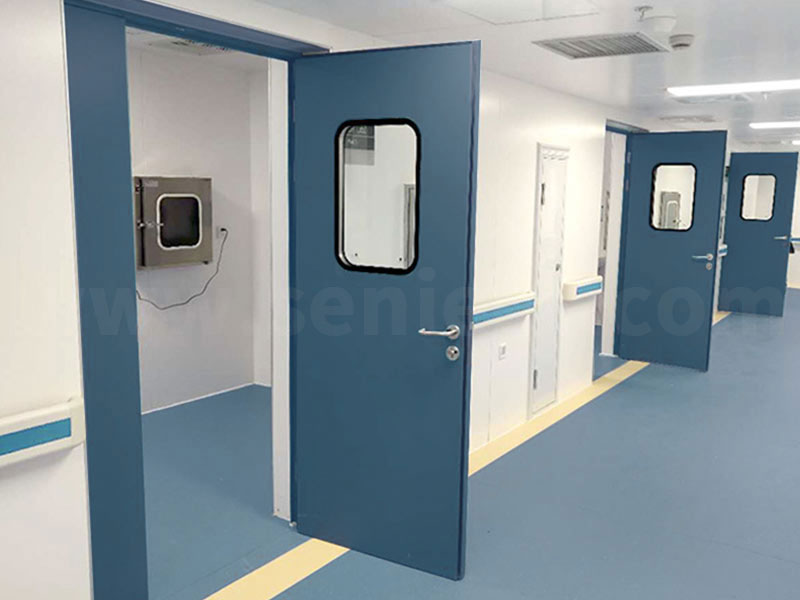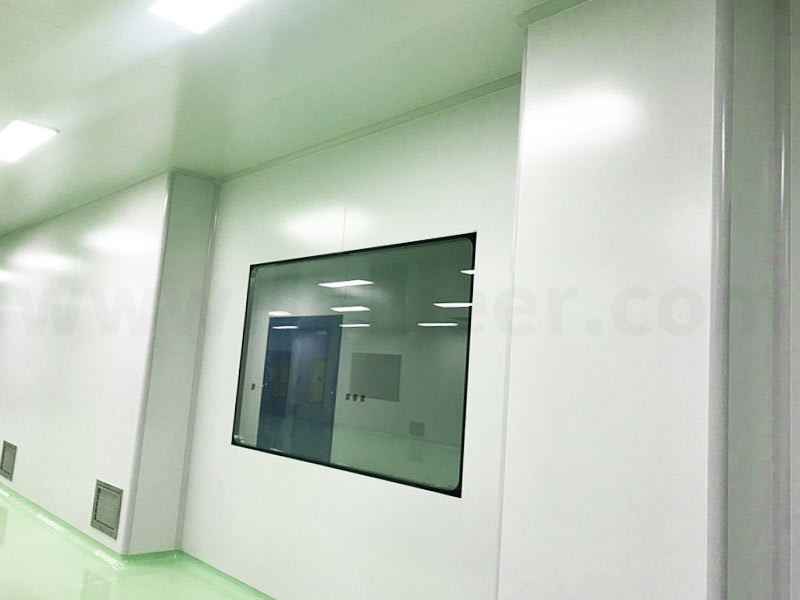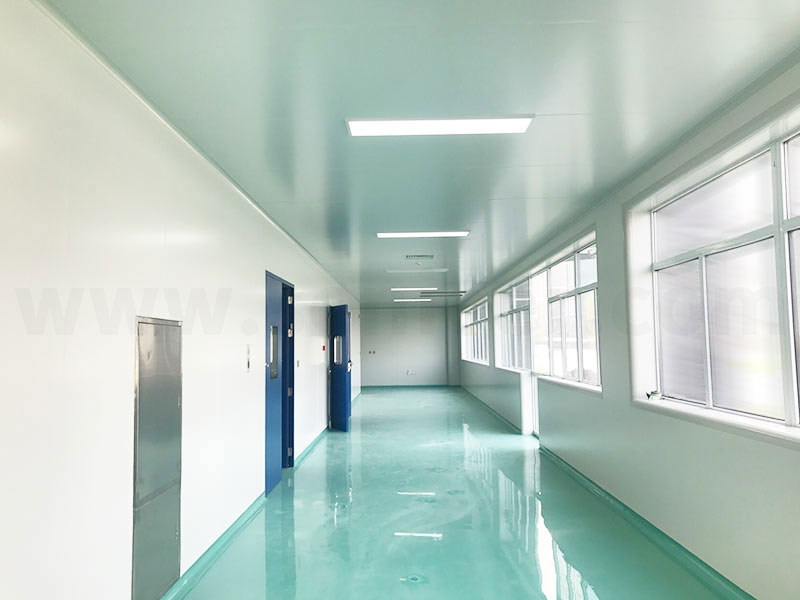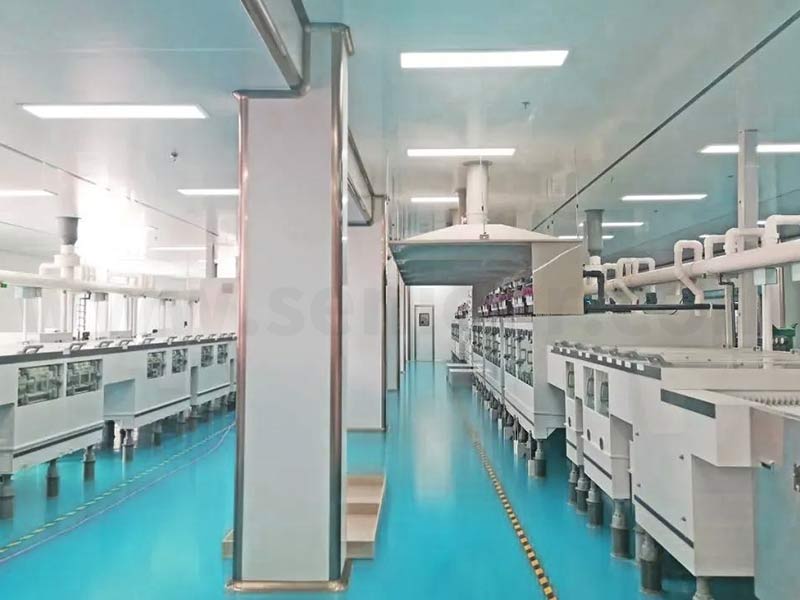Clean workshop, also known as clean room, dust-free workshop, clean room, etc. Clean workshop in pharmaceutical and biological engineering, precision machinery, medical and health, food, electronic materials and other fields of application is very extensive. In FED-STD-2, a cleanroom is defined as a room with air filtration, distribution, optimization, construction materials and devices, wherein specific rules of operation procedures to control the concentration of airborne particles, so as to achieve the appropriate level of particle cleanliness. The cleanliness of the clean room and the continuous stability of pollution control are the core standards for testing the quality of the clean room.
Then the scope of testing in the clean room generally includes: clean room environmental rating, engineering acceptance testing, including food, health care products, cosmetics, bottled water, milk production workshop, electronic product production workshop, GMP workshop, hospital operating room, biosafety laboratory, biological safety cabinet, ultra-clean workbench, dust-free workshop, aseptic workshop, etc. Testing items: wind speed and air volume, number of air changes, temperature and humidity, pressure difference, suspended particles, planktonic bacteria, sedimentation bacteria, noise, illuminance, etc. For details, you can refer to the relevant standards for cleanroom testing.
01 Wind Speed And Number Of Air Changes
The cleanliness of clean rooms and clean areas is mainly achieved by feeding a sufficient amount of clean air to displace and dilute the particulate pollutants generated in the room. To this end, it is necessary to determine the supply air volume, average air speed, supply air uniformity, air flow direction and flow pattern of clean rooms or clean facilities. One-way flow mainly relies on clean air flow to push and squeeze, displace the polluted air in the room and area to maintain the cleanliness of the room and area. Therefore, the wind speed and uniformity of the supply air section are important parameters affecting cleanliness. Higher, more uniform cross-sectional wind speeds eliminate contaminants from indoor processes faster and more efficiently, so they are a major concern.

Non-one-way flow mainly relies on the incoming clean air to dilute and dilute pollutants in the room and area to maintain its cleanliness. Therefore, the greater the number of air changes, the reasonable air flow type, the more significant the dilution effect, and the corresponding increase in cleanliness. Therefore, the air supply volume of the non-single-phase flow clean room, the clean area and the corresponding number of air changes are the main concerns of the airflow test items.
To obtain repeatable readings, the time average of the wind speeds at each measurement point is recorded. Number of air changes: according to the total air volume of the clean room divided by the volume of the clean room.
02 Temperature And Humidity
The temperature and humidity measurement of clean rooms or clean facilities is usually divided into two grades: general testing and comprehensive testing. The first grade is suitable for cross-completion acceptance testing in an empty state, and the second grade is suitable for static or dynamic comprehensive performance testing. This type of test is suitable for occasions where temperature and humidity performance requirements are more stringent. This test is performed after the airflow uniformity test and after the adjustment of the air conditioning system. By the time this test was carried out, the air conditioning system was fully operational and the conditions were stable. At least one humidity sensor is provided in each humidity control area and sufficient stabilization time is given to the sensor.
The measurement should be suitable for the purpose of actual use, and the measurement should be started after the sensor is stabilized, and the measurement time is not less than 5 minutes. The purpose of this test is to verify the ability to maintain a defined pressure differential between the finished facility and the surrounding environment, and between spaces within the facility. This test applies to all 3 occupancy states. This test needs to be done regularly. The test of the differential pressure should start from high pressure to low pressure under the condition that all doors are closed, from the inner room farthest from the outside world on the layout, and then test outward in turn; There are different grades of adjacent clean rooms (areas) where holes are connected, and there should be a reasonable flow direction of air flow at the mouth of the hole, etc.
03 Differential Pressure Detection Requirements:
- The determination of the static pressure difference is required to be carried out when all doors in the clean area are closed.
- On the clean plane, the order of cleanliness from high to low should be carried out sequentially, until the room that leads directly to the outside is detected.
- The measuring tube mouth can be set anywhere in the room without the influence of air flow, and the test pipe mouth surface is parallel to the air flow line.
- The measured recorded data should be accurate to 1.0Pa.
Differential Pressure Detection Steps:
1) Close all doors first.
2)Measure the pressure difference between each clean room, between the clean room corridors, and between the corridors and the outside world with a differential differential pressure gauge.
3) Record all data.

Differential pressure standard requirements According to the cleanroom design or process requirements, the positive or negative pressure value of the cleanroom under test is maintained.
- The difference in static pressure between different levels of clean rooms or clean rooms and non-clean rooms (areas) should not be less than 5Pa.
- The static pressure difference between the clean room (area) and the outdoor should not be less than 10Pa.
- For the one-way flow clean room with an air cleanliness level stricter than level 5 (100 level), when opening the door, the dust concentration of the indoor working surface at 0.6m inside the door should not be greater than the dust concentration limit of the corresponding level.
4) If the requirements of the above standards are not met, the fresh air volume and exhaust air volume should be readjusted until it is qualified.
04 Suspended Particles
1)The indoor tester must wear clean clothes, not more than 2 people, should be located on the downwind side of the test point and away from the test point, and should remain stationary. The operation should be light when changing points, and the interference of personnel with the cleanliness of the room should be reduced.
2)The equipment should be used during the calibration period.
3)Equipment “zeroing” before and after detection.
4)In the unidirectional flow area, the selected sampling probe should be close to isodynamic sampling, and the wind speed into the sampling probe should not deviate from the wind speed of the collected air by more than 20%. If this is not possible, the sampling port is directed towards the main direction of the airflow. For sample points that are not unidirectional streams, the sample port should be vertically up.
5)The connection tube from the sampling port to the particle counter sensor should be as short as possible.

The sampling point is generally about 0.8-1.2m from the ground, and it is necessary to uniformly and scientifically distribute the point, and avoid the return air outlet. For any small clean room or local air purification area, the number of sampling points shall not be less than 2, and the total number of samples can be obtained according to the area of 2 roots.
The minimum number of sampling points corresponds to the number of suspended particle sampling points, the working area measurement point position is about 0.8-1.2m from the ground, the air outlet measurement point position is about 30cm away from the air supply surface, and the measurement point can be increased at the key equipment or key working activity range, and each sampling point is generally sampled once. After all sampling is complete, the Dish is placed in a constant temperature incubator for no less than 48 hours, and each batch of medium should have a control experiment to check whether the medium is contaminated.
05 Sedimentation Bacteria
The location of the work area measurement point is about 0.8-1.2m from the ground, the prepared Petri dish is placed at the sampling point, open the Petri dish lid, so that it is exposed to the specified time, and then the Petri dish is covered, and the Petri dish is placed in a constant temperature incubator for incubation, the time is not less than 48 hours, each batch of media should have a control experiment to check whether the medium is contaminated.
06 Noise
The measurement height is about 1.2 meters from the ground, and the clean room area is less than 15 square meters, only 1 point in the center of the measurement room; if the area is more than 15 square meters, it should also be measured diagonally 4 points, 1 meter from the side wall, and the measurement point is facing each corner.
07 Illuminance

The measurement point plane is about 0.8 meters from the ground, and the points are arranged according to the spacing of 2 meters, and the room measurement point within 30 square meters is 0.5 meters from the side wall, and the room measurement point of more than 30 square meters is 1 meter from the wall.










